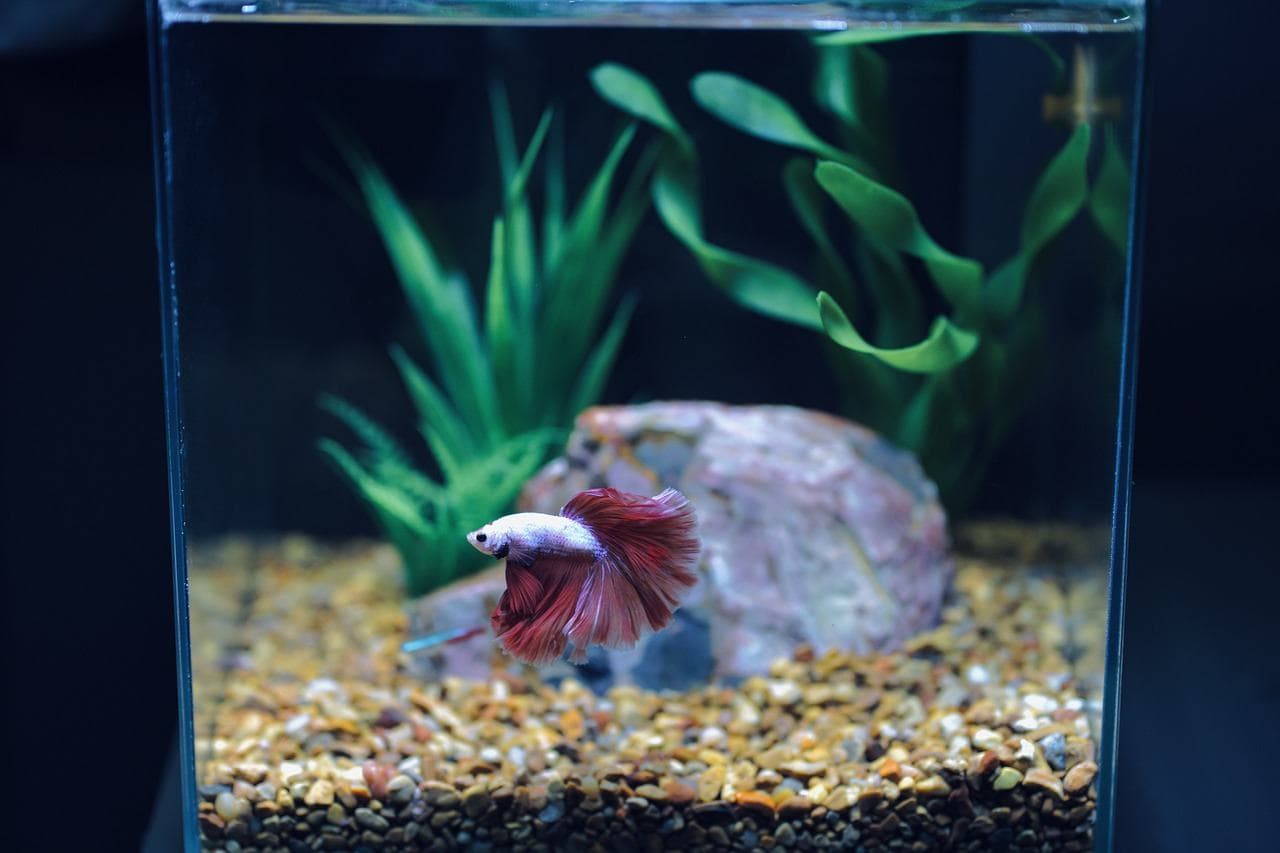

However, in 1856, Der See im Glase (The Lake in a Glass) was published, discussing freshwater aquaria, which were much easier to maintain in landlocked areas. In 1854, an anonymous author had two articles published about the saltwater aquaria of the United Kingdom: Die Gartenlaube (The Garden House) entitled Der Ocean auf dem Tische (The Ocean on the Table). Germans soon rivaled the British in their interest. "What an Aquarium Should Be" – a humorous 1876 British engraving, apparently showing Thomas Huxley dreaming about sea creatures Edward Edwards developed these glass-fronted aquaria in his 1858 patent for a "dark-water-chamber slope-back tank", with water slowly circulating to a reservoir beneath. Tank designs and techniques for maintaining water quality were developed by Warington, later cooperating with Gosse until his critical review of the tank water composition. In the 1850s, the aquarium became a fad in the United Kingdom. In this book, Gosse primarily discussed saltwater aquaria. Gosse coined the word "aquarium", opting for this term (instead of "aquatic vivarium" or "aqua-vivarium") in 1854 in his book The Aquariums: An Unveiling of the Wonders of the Deep Water. In 1853, the aquarium craze was launched in England by Philip Henry Gosse who created and stocked the first public aquarium in the London Zoo which came to be known as the Fish House. In the United Kingdom, it became popular after ornate aquaria in cast-iron frames were featured at the Great Exhibition of 1851.

The keeping of fish in an aquarium became a popular hobby and spread quickly. The Jardin zoologique at the Bois de Boulogne included an aquarium that housed both fresh and saltwater animals, 1860 in Paris. He published his findings in 1850 in the Chemical Society's journal. The aquarium principle was fully developed by Warington, explaining that plants added to water in a container would give off enough oxygen to support animals, so long as their numbers do not grow too large. English chemist Robert Warington experimented with a 13-gallon container, which contained goldfish, eelgrass, and snails, creating one of the first stable aquaria. In 1846, Anne Thynne maintained stony corals and seaweed for almost three years, and was credited as the creator of the first balanced marine aquarium in London. In 1838, Félix Dujardin noted owning a saltwater aquarium, though he did not use the term. In 1841 he did so, though only with aquatic plants and toy fish. Nathaniel Bagshaw Ward proposed to use his tanks for tropical animals. In 1836, soon after his invention of the Wardian case, Dr. In 1832, Jeanne Villepreux-Power, a pioneering French marine biologist, became the first person to create aquaria for experimenting with aquatic organisms. Specialized equipment maintains appropriate water quality and other characteristics suitable for the aquarium's residents.Īn aquarium of the 1850s containing Vallisneria spiralis and coldwater fish from Shirley Hibberd's The Books of the Aquariums and Waters Cabinets. Size can range from a small glass bowl, a few liters in volume, to immense public aquaria of thousands of liters. Cuboid aquaria are also known as fish tanks or simply tanks, while bowl-shaped aquaria are also known as fish bowls. Īn aquarist owns fish or maintains an aquarium, typically constructed of glass or high-strength acrylic. A large aquarium may have otters, turtles, dolphins, sharks, and whales.

Public aquariums keep fish and other aquatic animals in large tanks. There are large public aquariums in many cities. Small aquariums are kept in the home by hobbyists. The aquarium craze was launched in early Victorian England by Gosse, who created and stocked the first public aquarium at the London Zoo in 1853, and published the first manual, The Aquarium: An Unveiling of the Wonders of the Deep Sea in 1854. The aquarium principle was fully developed in 1850 by the chemist Robert Warington, who explained that plants added to water in a container would give off enough oxygen to support animals, so long as the numbers of animals did not grow too large. The term aquarium, coined by English naturalist Philip Henry Gosse, combines the Latin root aqua, meaning 'water', with the suffix -arium, meaning 'a place for relating to'. Fishkeepers use aquaria to keep fish, invertebrates, amphibians, aquatic reptiles, such as turtles, and aquatic plants. A freshwater aquarium with plants and various tropical fishĪn aquarium (plural: aquariums or aquaria) is a vivarium of any size having at least one transparent side in which aquatic plants or animals are kept and displayed.


 0 kommentar(er)
0 kommentar(er)
